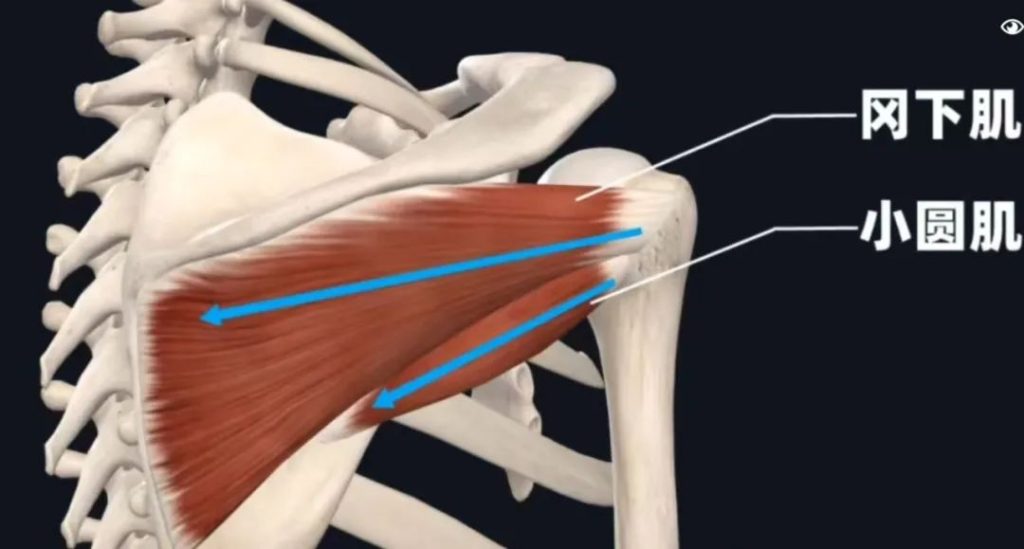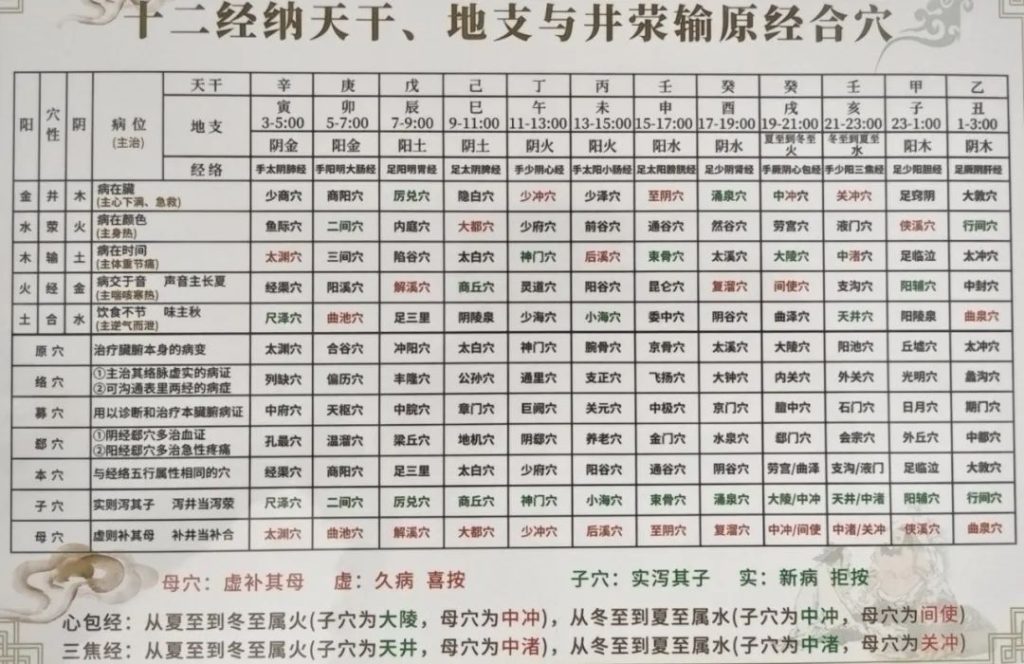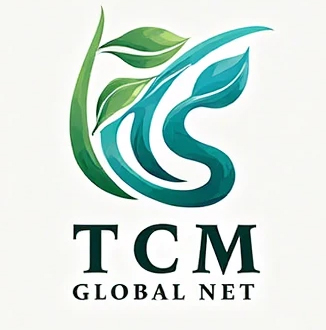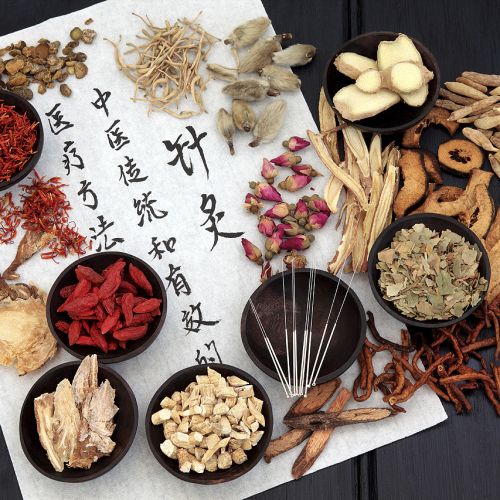A highly effective cure that has been personally verified and screened over the years!
This article systematically organizes my clinically verified shoulder pain diagnosis and treatment system for many years, integrating traditional acupuncture, fascial release and prescription medication to form a "needle and medicine linkage" characteristic therapy. Statistically, this program has an effective rate of 82.6% (2023 follow-up data) for common conditions such as frozen shoulder and rotator cuff injury, and is especially suitable for patients with chronic intractable pain. The techniques described in the article have been ethically reviewed, and patients should be treated under the guidance of a licensed physician.
I. Five-dimensional integrated diagnostic and treatment framework
First, let's talk about acupuncture, my thinking has always been in accordance with the framework given by Mr. Zuo Changbo, although I have learned a lot of acupuncture later on, but in general the framework is not far from Master Zuo (Mr. Zuo Changbo), that is, three adjustments, one cure, and one passage through the section. Regulate qi, regulate blood, regulate meridians and sinews, cure God, and pass through the section. Regrettably, so far will not do the manipulation, if the bones, adjust the tendons, the line of qi, stabbing the blood, cure God, bones, tendons, qi, blood and God at the same time at all levels, I believe that the disease will be better faster.
1. Rapid analgesia with effective acupuncture
Principles of Point Selection: Follow the three combinations of "proximal acupoints, distant acupoints and corresponding acupoints".
- Core Acupuncture Points Group::
- Kidney Pass Point (Dong's Qi Point): Regulates overall qi and blood flow
- Balancing against lateral shoulder pain points: activating nerve reflexes
- Zhongzhu point (hand Shaoyang Sanjiao meridian): dredging Shaoyang meridian qi
- Chongzi Chongxian Point (Dong's Qi Point): relieving spasm and pain
Operating Points: (generally take the opposite side first, need to guess the point, will not guess the point look at this article)Chinese Medicine | Acupuncture and moxibustion to take effect 20 questions, meticulous consideration)
- Take the healthy side's special effect point first, with the affected side's active/passive movement
- Enhance the sense of qi by using the Cang Turtle probing technique.
- Leave the needle in place for 30 minutes, during which time the needle will be applied once every 10 minutes.
The Kidney Guan point and Chong Zi Chong Xian are Dong's Qi points, and the Shoulder Pain point is Wang Wen Yuan's Balance Acupuncture Points. The points on the Balance Acupuncture Points are all special effect points, so it can be said that they are necessary and basically take effect.
The Kidney Guan and Shoulder Pain points are mainly used when the shoulder cannot be flexed or extended normally, such as abduction, forward extension, backward extension, and lifting, and the points are stimulated while the patient is asked to perform another movement that is painful to him or her.
The Zhongzhu point, along with the Chongzi and Chongxian points, is used primarily for scapular pain, and again requires a qi-moving action.
Of course, there are many acupuncture points for shoulder pain, after my own tests, the above acupuncture points are reliable, rest assured that the use, if there is no effect may not have found the right location, the need to speculate on the point.
2. Fascial release precision interventions
Adjusting the meridian tendons used here is fascial release, Lv Xiaofeng, Ye Yinghua, Wang Lianbin, these people are engaged in fascial release, the treatment of shoulder joint pain set are the same.
Both have the patient do the following three maneuvers:
First: Shoulder hike with upward and forward bending
Second: backward stretching and touching the waist
Third: Outreach uplift
Use the movements to determine which muscles are at fault.
There are two groups of muscles involved in maintaining a movement in the human body. One group is called the active muscles, which are the muscles that are actively going to perform the movement. The other is called the antagonist muscles, which act as pulling muscles to prevent the joints from moving too much.
So if the patient can't do one movement, we have to consider both sets of muscles at the same time. For example, if the patient's shoulder joint hurts when he does a backward stretching and touching movement, the active muscles to consider are the infraspinatus and teres minor, which are responsible for pulling backward. The antagonist muscle is the rostro-humeral muscle, a muscle in front of the shoulder, which is responsible for pulling forward to prevent too much posterior extension.

The treatment locations are mainly at the starting and stopping points of the muscles and there are 6 of these starting and stopping points in total. So if you don't really want to know which muscles are at fault and where the starting and stopping points of all these muscles are. All you need to do is memorize these 6 fixed starting and stopping points. Whatever the case of shoulder pain, feel all 6 starting and stopping points, and if there are any tendon knots, untie them.
The six starting and ending points are: the rostral process, the lesser tubercle of the humerus, the intertrochanteric sulcus, the greater tubercle of the humerus, the inferior glenoid tubercle, and the medial-superior angle of the scapula.
I have made two tables, if you do not understand, you can see the table, as follows:
The muscles involved in the three movements and their starting and ending points
| active muscle | antagonist muscle | Treatment points (starting and ending points) | |
| move upwards | Deltoid, supraspinatus | scapular girdle (anatomy) | Greater tuberosity of humerus, medial-superior corner of scapula, plus one shot of acromioclavicular union |
| shoulder paddle (swimming) | Beaked humerus, biceps brachii muscle | infraspinatus, teres minor, triceps brachii | Rostrum, greater humeral tubercle, intertrochanteric sulcus, subglenoid tubercle |
| back-touching motion | infraspinatus, teres minor, teres major, biceps brachii | Triceps brachii, rostro-humeral muscle | Humeral greater tuberosity, lesser tuberosity, rostral eminence, subglenoid tuberosity, intertrochanteric sulcus |
Muscles involved in the treatment point (starting and ending points)
| starting and ending points | Involving muscles |
| Inside upper corner of scapula | scapular girdle (anatomy) |
| greater tubercle of the humerus (anatomy) | Supraspinatus, infraspinatus, teres minor muscles |
| beak protrusion | Beaked humerus, short head of biceps brachii muscle |
| tubercle of the humerus (anatomy) | Latissimus dorsi, vastus lateralis, subscapularis |
| infra-pelvic nodule (medicine) | Triceps long head |
| interdigital groove | Biceps long head |
In fact there are 4-5 involved except for the lifting maneuver which considers two healing points, and that inner upper corner of the scapula is exclusive to the lifting maneuver. So you don't have to memorize too much, just find the 6 points and touch them one at a time to find the tendon knots to unravel with a thick needle.
For more information on how to find the 6 points, you can go search the fascial needling technique taught by Lui, in the section on shoulder pain treatment.Two other points to note:
First: patients with shoulder problems are often closely related to the muscles on the cervical spine, the upper and lower parts of the large vertebrae points, Hua Tuo pinch points to be tied up to loosen the muscles.
Secondly, patients who do lifting movements with popping in the shoulder joint also have problems with the supraspinatus muscle.
Fascial needling, to have some anatomical knowledge, learning is actually more mechanical, are fixed points, remember on the line.
This is not the case with the left master's toning of the meridian tendons. For example, if you have a low back problem, you may be able to find a tendon knot in the calf's stomach and solve the low back problem. Another example is the stomach problem in the neck to find the tendon knot to solve, more involved in the hedge, take the image, the circulation route of the problem, pure Chinese medicine thinking.
Of course left division fascial release is also used, in an eclectic way. Take a look at a previous article I wrote on pure Chinese medicine thinking about toning the meridian tendons, see:One Breath Circulation | Neck and Tummy Toning
In addition, if you think the fascial release technique is troublesome, you can not learn it, we are in so many levels of healing, bones, tendons, qi, blood and God, less this technique can still cure the disease. In the past, there was no anatomy, and the ancients would not have been able to do this trick, and besides, a prescription can be good.
Fascial release is actually also a special effect acupuncture, you adjust the balance at the level of the meridians and tendons, the patient will see the effect in the moment. But in the later stages of healing, you have to regulate at the level of qi, blood and spirit, wind-cold, phlegm-dampness, blockage of blood, and even habitual bad posture. This is where the fascial release technique falls short.
Of course, there are also cases where qi and blood restore a qi circumferential flow on their own after loosening, but in most cases it is still necessary to work with identification and use acupuncture and medicine to tune up the general environment of the organism a bit.
Don't get caught up in any law; the law will fall out of the end.
anatomical localization::
| pain area | Involving muscles | Anatomical symbols |
|---|---|---|
| suprascapular angle of the inner scapula | scapular girdle (anatomy) | C7 sphenoidal paracentesis 4 cm |
| greater tubercle of the humerus (anatomy) | supraspinatus muscle | 3 horizontal fingers below the acromion of the shoulder |
| interdigital groove | Biceps long head | 2 cm above lateral humeral condyle |
operational specification::
- Use of 0.35 x 50mm special round sharp needles
- Puncture at a 45° angle along the course of the muscle fiber
- Perform the "Green Dragon Swinging Tail" stitch to loosen adhesions.
3. Dispelling blood stasis and regenerating new blood by stabbing blood in the micro-channels
When stabbing the blood, signs of bruising often manifest themselves in a variety of ways. For example, the pulse does not beat smoothly and appears astringent during pulse diagnosis); veins under the tongue are tortuous and dark purple in color; the site of pain is fixed and immobile, and the pain is obvious when pressed; greenish-purple petechiae or collaterals are visible on the surface of the skin; there is a painful sensation when pressed on the lower left or right side of the navel; the color of the mouth and lips is greenish-purple; the episodes of pain are of a fixed time pattern; there is a history of traumatic injury or surgery (history of traumatic injury and surgery); long-term illness causes the condition to penetrate deep into the meridians; dry, rough skin or scaly or ichthyosis-like skin. illness leading to deeper penetration into the meridians; blue-purple, curved and dilated blood vessels visible on the white eyeballs; dry, rough, scaly or ichthyosis-like skin; brown or blackish-purple blood clots in menstrual blood discharged during menstrual cramps; bruises appearing easily when the skin is lightly touched; and so on.
I usually judge the blood stasis according to the pulse diagnosis, tongue diagnosis, abdominal diagnosis, I think I feel and see more objective. After all, sometimes the patient can not say, the body surface may not be able to see the obvious stasis. I will not go into detail here, and will make a separate article to explain it later.
I tend to think about a few things when I prick blood, namely where to look for bruised areas:
I. Microcosmic stabbing of blood (taking an image on the finger or bloodletting through the meridian, left division stuff)
Second, Dong's qi points stabbing the blood area (all are common reaction areas of bruises, which can be found online)
Third, stabbing blood through the meridians (the meridians where the pain points are located)
IV. Dorsal acupoints for stabbing the blood area (e.g. liver disease, stomach disease, bruises, blood clubbing, diaphragm yu)
Fifth, the pain belongs to a wide range of stabbing blood (such as the lower body stabbing the commission, head and face stabbing the tip of the ear, chest problems stabbing the elbow socket, etc.)
Shoulder pain here is mainly a case of blood pricking through the meridians, mainly involving four meridians: the lung, large intestine, triple jiao and small intestine meridians, plus the eponymous meridians of the spleen, stomach, gallbladder and bladder meridians should also be considered. In fact, it is the corresponding part of the arm in the leg to take the image, the outer three meridians, plus the inner upper edge of a meridian, to find a stasis to stab blood can be found.
Stabbing the Blood Program::
- Shoulder well through Tianzong (bloodletting 3-5ml)
- Plum Blossom Needle Percussion around A-Shi point
- Combined with acupoint cupping at the diaphragm point
4.Regulating Qi
There are three ways to think about it if you are adjusting your qi:
The first: Zapping ordinary qi-tuning needles, which must be zapped at this meridian and the meridian-transferring points of the same name as well as at the Shaoyang point.
Shoulder pain must be zapped on this meridian and the meridian of the same name to lose points, and lose the main body to rejoin the pain. In addition, with the other points on this meridian and the meridian of the same name. For example, if it is a problem of the large intestine meridian, then zap the large intestine meridian transmission point Sama, the stomach meridian transmission point Neiting, in addition to a few other points such as Shakuzawa, Foot Sanli, and so on.
Points on the Shaoyang meridian must be zapped because the shoulder belongs to the Shaoyang according to its location, the Zhongzhu point (Zhongbai and Xiabai inverted horse needles can be substituted), and Yanglingquan (can be replaced by lateral Sanli and lateral lower Sanli inverted horse needles). The so-called inverted horse needle is two or three needles side by side to enhance the efficacy, but also Dong's Qi points of things.
But wherever the pain point is located in the meridian, I only zap the same side, is to dredge the same side of the qi and blood. Special effect points are zapped on the opposite side, the significance of hedging is no longer a question of meridian circulation, it is a direct effect on another level of qi, the significance of hedging is greater.
The second: to regulate the patient's internal environment according to the identification of the disease, often the patient is accompanied by yang deficiency, cold and dampness, silt and blood, phlegm and turbidity.
This is the time to zap the cold-removing stitches, the Yang-warming stitches, and the stitches that mediate the spleen and stomach. As for the needles various schools of thought have, look for them on your own, they are all about regulating the general environment of the body and allowing the underlying logic of the body to function on its own.
I usually mix the above two stitches, zapping one day to regulate qi and one day to regulate the internal environment.
The third: the application of the five acupoints
If you use the internal organs and meridians identification, then the final conclusion will be the internal organs of the problem of deficiency, and then you can use the five acupoints to zap, the same as prescription medication, the deficiency is to supplement its mother, the real is the diarrhea of its son.
For example, if the diagnosis is that the Spleen-Qi is deficient in phlegm-dampness, the Spleen meridian is the Earth meridian, and if it is deficient, it is necessary to tonify its mother, and if fire produces earth, then zap the Earth meridian fire point (the Spleen meridian fire point is the Duodu point), and then zap the Fire meridian fire point (the Small Intestine meridian fire point, i.e., the Qiangu point). The routine is to first zap the mother point of this meridian, and then zap the mother point of the mother meridian.
In fact, the diarrhea of its son is the same, first zapping the son point of this meridian, and then zapping the son point of the son meridian.
The five acupuncture points need to be memorized, and it takes a lot of work to say them off the top of your head, and you also have to consider the yin jingmu and yang jingjin, which is honestly more troublesome. But if you pursue a kind of thinking to unify the prescription with the needle, you can study it well. The application of the five acupuncture points recommended a book, Mr. Yang Weijie's "acupuncture five acupuncture point application play", the real thing, withstand clinical verification.
In addition, there is no need to be limited to this, for example, you identify as having blood stasis, then the prescription prescribes blood activation and elimination of blood stasis medicine, with the needle can be stabbed blood ah, the effect may be better. For example, if you identify a problem with the spleen and stomach, and the prescription uses the idea of transporting the spleen and resolving phlegm-dampness, then the needle can go to the abdomen and the back of the neck to find tendon knots and untie them, and the effect will be more violent.
Or if you identify a Yang deficiency with cold, then the cold-drainage acupuncture and Yang-warming acupuncture can be arranged again. The combination of needles and medicines and the five acupoints is one way to think about it, so don't get stuck in it.
Regarding the five acupuncture points, I've got a table here that looks a little more comfortable.Mother and child points are color-coded, easy to find the points. And there's a time match in there to share:

II. Strategies for the use of scripture
1. Staging of the disease
| course of disease | core pathogenesis | Representative prescription | Points to add or subtract |
|---|---|---|---|
| Acute phase (<2 weeks) | cold condensation and blood stasis (TCM) | Pueraria Mirifica and Energizer | Add 15g of turmeric to induce menstruation |
| Move extension (February-June) | paralysis by sputum and wetness | Finger Poria Pill combined with Erjutsu Tang | Add Wei Ling Xian 30g to clear the channels |
| Chronic phase (>6 months) | deficiency of liver and kidney | Alloy Kou Kidney Qi Pill with Duo Wu and Sheng Tang | Add Bone Marrow 15g to renew the tendons |
2. Specialty drug pair applications
- Shoulder and arm circulation groupTurmeric 12g + Gui Zhi 9g + Sang Zhi 30g (Dosage Ratio 4:3:10)
- Warming Yang and Dispersing Cold GroupPrepared Chuanwu 6g (first decoction) + Bai Shao 15g + Ephedra 3g
- complementary group of muscles and bones: Cortex Eucommia Ulmoides 15g+Schisandrae Chinensis 12g+Cortex Eucommia Ulmoides 9g (melted)
Symptoms tend to be soreness, stiffness, heaviness, fear of cold, inability to flex or extend, and lack of freedom of movement in the shoulder.
The medication is used according to the patient's disease mechanism and is often divided into long and short periods of time.
Cold-dampness or phlegm-dampness is the main cause for prolonged periods of time.
For a short period of time, it's mainly bruising or cold.
First: Long duration of the disease, cold and dampness predominate.The patient's shoulder pain had a long course, and her shoulder was afraid of cold, and she herself was also afraid of cold legs and feet. Qiangwu Sheng Dampness Tang is often used with warming Yang medicines such as Radix et Rhizoma Polygoni Multiflori. Recently, I have learned the article of "Medical Forest Duxiaozhai", and I found that his idea is better, and the formula is also better, you can see this article.[Recent Effective Atractylodis Macrocephalae Soup] A good prescription for warming the muscles, tonifying the middle and benefiting the vital essence.
Second: The disease is long and phlegm-dampness is predominant.The patient also had a long course of the disease, without any cold or heat symptoms, and the shoulder was heavy and stiff, also accompanied by pain, with Finger Poria Pill. Phlegm-damp shoulder pain, medical Lin Duxiao Zhai used two arts soup, see this articleErzhu Tang: Analyzing the evidence for Erzhu Tang from the perspective of ancient scriptures and medicinal evidence
Third: Short duration of the disease, bruising is predominant.Patients are often caused by trauma or sprains for a short period of time, and commonly use Body Pain and Bruised Blood Soup.
Fourth: Short duration of illness, feeling cold or cold-dampnessIf the patient has felt cold and dampness for a short period of time, resulting in shoulder pain and unfavorable flexion and extension, Pueraria Mirifica Tang is often used.
The formula is still based on the identification of the prescription, the common pathology is these main. In addition to the drug addition and subtraction, I usually addPueraria MirificaHe also liked to addgenus Chaenomeles of shrubs in the family Rosaceae.. These remedies have an antispasmodic effect and are equivalent to a coarse needle stabbed obliquely to untie the knots.
In addition to the long duration of the disease long into the complex, short duration of the disease regardless of trauma or feel the cold, more or less blood stasis, I will add a flavor of blood activating medicine, sliced turmeric. Materia Medica: Bitter, pungent, warm, strong. Into the spleen and liver.Regulating the qi in blood, specializing in breaking up blood and dispersing knots, clearing up menstruation, and the slices can be used in the arm to treat paralysis and pain... On the one hand, it invigorates Blood and regulates Qi, and on the other hand, it likes to act on the shoulders and arms. It is sometimes combined with Gui Zhi Fu Ling Wan. But turmeric is basically added.
Recommended three Chinese medicines: Duhuo parasitism combined (not pills), paralysis capsule, finger fans Poria pill. Prices are expensive, too cheap to be effective.
III. Rehabilitation Management Program
1. Three-dimensional exercise therapy
- acute phase: Pendulum exercise (3 sets of 10 reps per day)
- convalescence: Wall climbing training (angle increases by 5° per day)
- consolidation periodEight Duan Jin: "Hands on the Sky and the Three Jiao" (1 time in the morning and 1 time in the evening)
2. External therapeutic interventions
- Hot and humid compresses with Chinese herbs: Frankincense, myrrh 10g each, vinegar external application (2 times a day)
- infrared light: Localization of painful points 20 minutes/session (energy density 0.8-1.2 J/cm²)
IV. Precautions
- Acupuncture contraindication: coagulation disorders, skin infections are prohibited
- Medication Alert: Aconite-containing herbs need to strictly follow the standard of preparation
- Rehabilitation points: Avoid lifting heavy objects (>2kg) on the affected side.


Leave a Reply